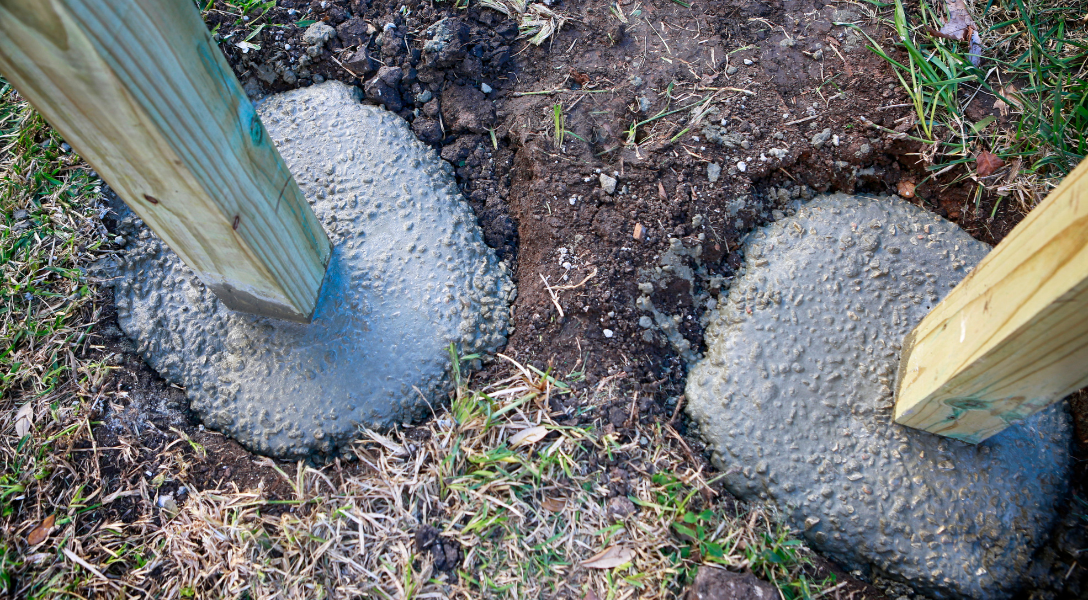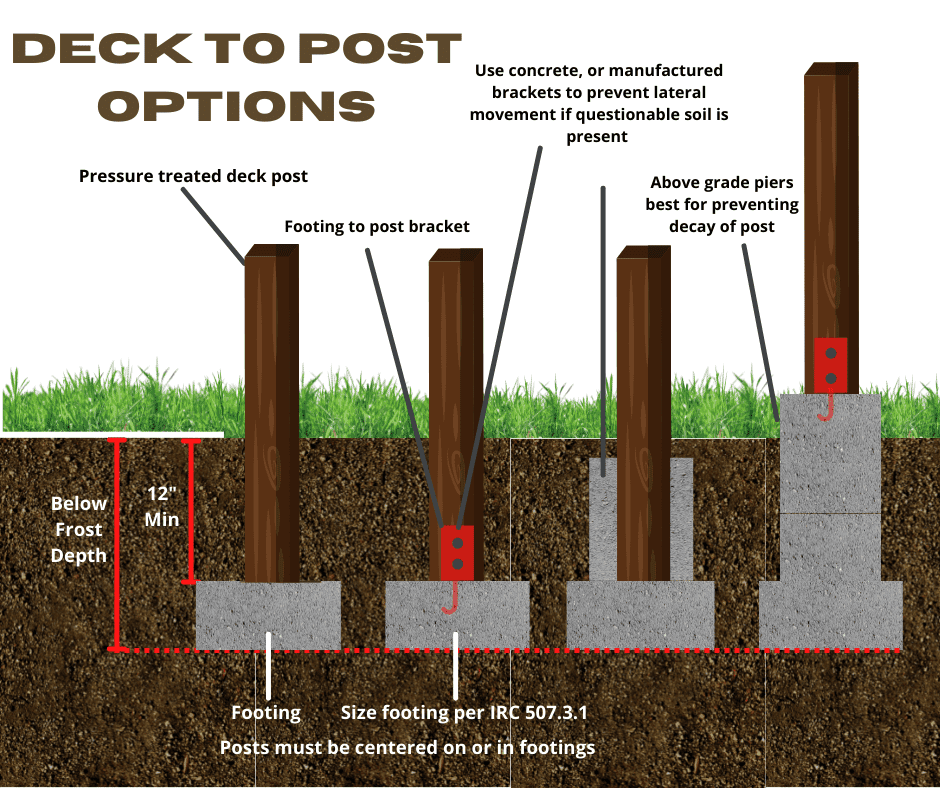Building a Solid Structure: Introducing the Tricks of Deck Ground
A well-designed and solid deck footing is vital for the stability and long life of any kind of deck structure. In this useful overview, labelled "Building a Strong Foundation: Revealing the Secrets of Deck Footing," we will certainly explore the value of proper grounds, the different kinds offered, and the elements to consider when selecting the best ones for your deck task. We will discuss the importance of routine maintenance and inspection to guarantee the continued safety and security and longevity of your deck grounds.
Importance of Correct Footings

Among the key reasons that proper grounds are crucial is to avoid the deck from sinking or shifting. Footings that are not deep enough or are poorly constructed can cause the deck to settle erratically or change over time. This can result in an uneven deck surface area, creating a stumbling threat and endangering the architectural honesty of the whole deck.

In addition, proper footings likewise aid to protect the deck from wetness damages. By boosting the deck structure above the ground, grounds protect against the wood from entering into straight call with moisture, decreasing the threat of rot and degeneration.
Kinds Of Deck Footings
The choice of ideal deck footings is a vital facet in making sure the security and long life of a deck structure. There are several sorts of deck footings that can be utilized, each with its own advantages and factors to consider.
One common kind of deck ground is the concrete pier footing. This entails excavating openings in the ground and putting concrete to create a strong structure for the deck. Concrete piers are functional and can be made use of in a variety of dirt conditions, making them a popular option for numerous deck jobs.
Another alternative is the helical pier ground. This kind of footing contains a steel shaft with helical plates that are screwed right into the ground. Helical piers are optimal for locations with poor dirt problems or locations vulnerable to high water tables. They offer superb security and can be adapted to the wanted elevation.
For decks improved flat or superficial structures, a superficial ground might be suitable. Superficial grounds are normally constructed from concrete and are positioned directly on the ground surface. They are best fit for smaller decks or areas with stable dirt problems.
Elements to Consider When Choosing Footings
When picking footings for a deck, it is very important to meticulously take into consideration numerous factors that will eventually identify the security and longevity of the framework. The initial element to think about is the sort of dirt on which the deck Home Page will be developed. Different dirt kinds have varying load-bearing capabilities, so it is necessary to analyze the soil's capacity to support the weight of the deck. Additionally, the environment of the area must also be thought about. Severe weather conditions, such as hefty rains or freezing temperatures, can influence the ground and potentially trigger movement or moving of the footings. One more crucial aspect is the size and height of the deck. Bigger decks with hefty lots or multiple degrees need even more significant footings to give sufficient support. The materials made use of for the footings should be chosen intelligently. Usual alternatives include concrete, helical heaps, and sonotubes. Each material has its advantages and drawbacks, so it is necessary to consider elements such as cost, convenience of installation, and upkeep needs. Finally, consulting with a professional designer or contractor can provide useful insights and ensure that the picked grounds meet local building ordinance and policies. By very carefully taking into consideration these variables, home owners can make informed decisions when choosing grounds for their deck, making certain a steady and long lasting structure.
Steps to Prepare and Mount Footings
To prepare and install footings for a deck, it is essential to follow a systematic approach that ensures security and longevity. The initial step is to identify the dimension and number of grounds needed based on the deck design and neighborhood structure codes. By complying with these steps diligently, one can make certain that the footings are properly prepared and mounted, supplying a solid structure for the deck framework.
Maintenance and Inspection of Deck Footings
To ensure the lasting security and security of your deck, regular maintenance and detailed examinations of the deck grounds are vital. The deck footings act as the foundation of your deck, sustaining the weight and tons of the whole framework. With time, these footings can experience damage because of various aspects such as climate condition, soil activity, and the natural aging procedure. It is critical to carry out regular maintenance to determine any prospective issues and address them promptly.
Regular maintenance needs top article to consist of visual evaluations of the footings, trying to find indicators of damage or degeneration. These can consist of cracks, sinking or changing of the grounds, or indicators of water damage. Additionally, it is necessary to inspect the security of the directory grounds by using stress or conducting load tests if required.
Along with aesthetic assessments, it is suggested to schedule professional inspections every few years. Experts can examine the architectural stability of the footings much more precisely and provide experienced advice on any kind of needed repair services or replacements.
Furthermore, correct maintenance additionally includes taking safety nets to protect the grounds (Deck Footings). This can include using water-proof finishings to avoid water damage, guaranteeing correct drain to avoid extreme wetness, and routine cleaning to get rid of particles and prevent build-up
Conclusion
In final thought, correct deck grounds play a crucial duty in making sure the stability and durability of a deck. By understanding the various kinds of footings readily available and thinking about variables such as dirt problems and local building ordinance, property owners can make informed choices when choosing grounds for their deck. In addition, routine upkeep and assessment of deck footings is vital to identify any type of prospective problems and make certain the security of the framework.
In this useful guide, labelled "Structure a Strong Structure: Introducing the Secrets of Deck Ground," we will explore the value of appropriate grounds, the various kinds available, and the factors to consider when selecting the right ones for your deck job.One common type of deck footing is the concrete pier ground.To make certain the long-term security and safety and security of your deck, regular maintenance and comprehensive inspections of the deck footings are necessary.In conclusion, appropriate deck grounds play an important function in making certain the security and longevity of a deck. By comprehending the various kinds of grounds offered and taking into consideration factors such as dirt problems and regional structure codes, property owners can make enlightened choices when picking footings for their deck.